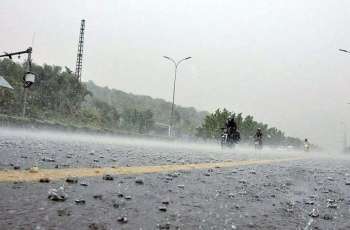A state of emergency has been declared in New South Wales, Australia, amid fears a record-breaking heatwave will exacerbate the state's bushfire crisis
NEW SOUTH WALES (Pakistan Point News / Online - 19th December, 2019) A state of emergency has been declared in New South Wales, Australia, amid fears a record-breaking heatwave will exacerbate the state's bushfire crisis.The nation endured its hottest-ever day on Tuesday, but that record was smashed again on Thursday - which saw an average maximum of 41.9C (107.4F).Tuesday's 40.9C had eclipsed the previous record of 40.3C, set in 2013. Authorities in New South Wales (NSW) are currently fighting about 100 fires, in a crisis that has lasted months.
Premier Gladys Berejiklian announced a seven-day state of emergency due to forecasts of worsening conditions. "The biggest concern over the next few days is the unpredictability, with extreme wind conditions [and] extremely hot temperatures," she told reporters on Thursday.Parts of NSW, of which Sydney is the capital, hit temperatures in the early-40s on Thursday. More intense heat was forecast for the rest of the week. A state of emergency gives fire authorities additional powers to cope with the crisis.
It is the second such declaration in NSW since last month.Bushfires have been raging in Australia for months, killing six people, destroying hundreds of homes and burning millions of hectares of land.The crisis - worsened by tinder-dry conditions from a severe drought - has spurred criticism of the nation's climate policies.Australia heated up this week as a mass of hot air swept east across the continent.The dominant climate driver behind the heat has been a positive Indian Ocean Dipole (IOD) - an event where sea surface temperatures are warmer in the western half of the ocean, cooler in the east.The difference between the two temperatures is currently the strongest in 60 years.The warmer waters cause higher-than-average rains in the western Indian Ocean region, leading to flooding, and drier conditions across South East Asia and Australia.





